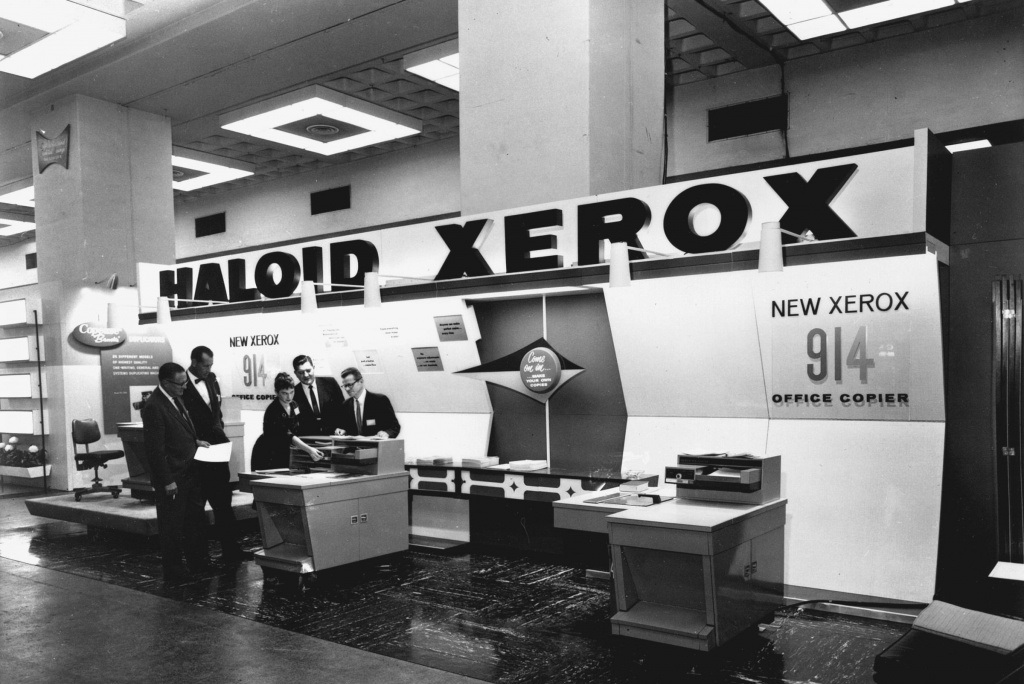How did Haloid become Xerox?
As noted earlier, Xerox was founded in 1906 in Rochester. It was called The Haloid Photographic Company for a long time. Initially, Zirox (this is how the brand name is pronounced in English transcription) produced and distributed photographic paper. In 1938, independent physicist Chester Carlson invented a process for printing images using an electrically charged drum and dry powder "toner". In October 1942, he filed a U.S. patent for electrophotography, a technology that would soon revolutionize the world of image and document processing and copying. On October 22, 1948, the name and process of xerography were officially announced at the annual meeting of the Optical Society of America in Detroit. That same year, the word "Xerox" was registered as a trademark. Joseph S. Wilson, considered the founder of Xerox as we know it, took over Haloid from his father. He recognized the market potential of the invention and in 1946 signed an agreement with Carlson to commercialize the copying technology. To distinguish the new system, Wilson coined the term "xerography", which comes from the Greek for "dry writing". In 1958, the company's name was changed to Haloid Xerox, and in 1961 to Xerox Corporation.
The company truly became known when it introduced "the most successful single product of all time," the Xerox 914, in 1959. The first plain-paper photocopier was so popular that by the end of 1961, Xerox had revenues of nearly $60 million, and In 1965, it exceeded $500 million. In the 1960s, the company expanded significantly, and its investors became millionaires. In 1960, the Wilson Center for Research and Technology opened its xerography research center in Webster, New York. In 1963, Xerox realized Carlson's vision of a copier that could fit on an office desk and introduced the first desktop Xerox 813. Ten years later, the first color photocopy machine hit the market.
1973, 1974 and 1975 were years of record revenue. The company opened representative offices throughout North America. In the mid-1970s, the company introduced the Xerox 9200 with 9,200 copies per hour for sale to printers. It was followed by the 9400 with automatic duplex printing, and then the 9500 with image zooming. The introduction of digital copiers in the 1990s and the revamping of its entire lineup restored Xerox's technical dominance. The company's new development - high-quality laser printers with built-in scanners - is called MFPs (multifunctional devices). One of their advantages was connection to the general computer network of the enterprise.
Xerox received the 2003 IEEE Corporate Innovation Recognition award, which recognizes the best products and concepts in electronics technology from the Institute of Electrical and Electronics Engineers. It was passed off as a line of DocuTech products that enabled digital transfer and storage of printable documents using a single machine. In 2006, the company filed a patent for "erasable paper" that would retain prints for only 24 hours, allowing for repeated use. A year later, Xerox received the US National Medal of Technology, the highest award given by the country's president to recognize leading innovators.
2013 was the last successful year for Xerox. Revenue exceeded $13 billion, and net profit - $1 billion. From that moment on, sales fell every year by an average of $450 million, and in 2020 they immediately dropped by $2 billion. Net profit followed the same course.
Major Xerox Awards and Achievements
The brand's first international recognition was the Deming Prize, Japan's highest quality award, which was established in 1950 to reward first Japanese and then international companies for their achievements in quality improvement. In 1980, this award was awarded to the Fuji Xerox joint venture.
The company received many awards and honors in the 1990s, including:
- Australian Service Excellence Award;
- the first European "Quality Award" from the European Foundation for Quality Management;
- Gold medal “For international corporate environmental achievements” from the World Center;
- National Wildlife Federation Environmental Achievement Award.
In 2019, the Xerox VersaLink C8000 was named "Outstanding Color Printer for Large Workgroups" and the VersaLink C9000 was named "Outstanding Color Printer for Enterprise Environments." The company's software lines are also multiple award winners. In 2022, Xerox received the 2022 Document Imaging Software Line of the Year Award for its industry-leading document imaging portfolio.





